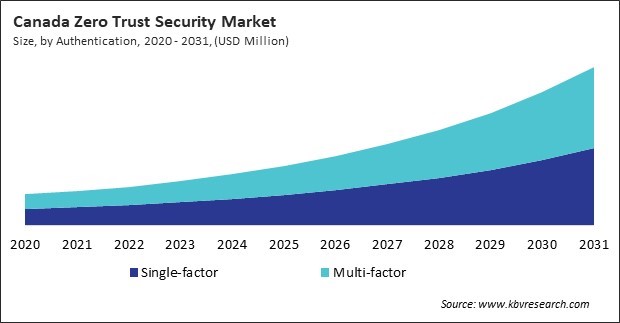The North America Zero Trust Security Market would witness market growth of 15.3% CAGR during the forecast period (2024-2031).
The US market dominated the North America Zero Trust Security Market by Country in 2023, and would continue to be a dominant market till 2031; thereby, achieving a market value of $25,249.2 million by 2031. The Canada market is experiencing a CAGR of 17.6% during (2024 - 2031). Additionally, The Mexico market would exhibit a CAGR of 16.8% during (2024 - 2031).

The zero trust security market is rapidly evolving as organizations recognize the increasing need for robust cybersecurity frameworks. The rise in sophisticated cyber threats, hybrid work environments, and reliance on cloud-based infrastructures have driven enterprises to adopt these models. Unlike traditional security models that assume everything within the network is trusted, zero trust operates on the principle of “never trust, always verify.”
Zero-trust security is applicable across various industries and use cases, making it a fundamental approach to modern cybersecurity. Large enterprises use Zero-Trust models to protect their sensitive data and intellectual property from external and internal threats. Companies ensure that only authorized users and devices can access critical systems by implementing multi-factor authentication (MFA), endpoint security, and micro-segmentation.
With large-scale investments, healthcare institutions in Canada are expanding their electronic health records (EHRs), telemedicine, and cloud-based health services, requiring zero trust frameworks to secure sensitive medical data. The healthcare sector remains a prime target for ransomware attacks, data breaches, and identity theft. Zero trust security ensures continuous monitoring and authentication, reducing vulnerabilities in hospitals and clinics. In addition, Mexico’s healthcare sector is increasingly adopting telemedicine platforms and cloud-based medical record systems, necessitating zero-trust security to ensure data integrity and prevent cyber threats. The increase in ransomware attacks on hospitals and healthcare providers pushes the demand for zero-trust frameworks to secure medical records and digital transactions. Mexico is advancing e-health initiatives, prompting the adoption of strong cybersecurity frameworks to protect patient information. Hence, across Canada, Mexico, and the USA, the expansion of digital healthcare services, increasing cyber threats, and strict data privacy regulations are fuelling the demand for zero-trust security solutions.
Free Valuable Insights: The Zero Trust Security Market is Predict to reach USD 101.39 Billion by 2031, at a CAGR of 16.1%
Based on Authentication, the market is segmented into Single-factor, and Multi-factor. Based on Deployment, the market is segmented into Cloud, and On-Premises. Based on Enterprise Size, the market is segmented into Large Enterprises, and SMEs. Based on Type, the market is segmented into Network Security, Data Security, Endpoint Security, On-premises Security, and Other Type. Based on End Use, the market is segmented into BFSI, IT & Telecom, Retail, Healthcare, and Other End Use. Based on countries, the market is segmented into U.S., Mexico, Canada, and Rest of North America.
By Authentication
By Deployment
By Enterprise Size
By Type
By End Use
By Country
Our team of dedicated experts can provide you with attractive expansion opportunities for your business.

